modern Morality | The Prints of William Hogarth
Renowned English artist William Hogarth (1697–1764) is best known for his series of prints that depict modern moral subjects, including the sequence of engravings called A Rake’s Progress. Filled with dark humor and bawdy satire, this narrative series mocks the excesses of England’s Georgian society (1714–1837) and warns of the consequences of decadence, depravity, and corruption.
One of Hogarth’s earliest series, A Rake’s Progress tells a fictional tale of the immoral rake or womanizer named Tom Rakewell. In only eight engravings, Hogarth’s central character inherits a fortune from his miserly father, squanders it, and ends up destitute, and imprisoned. These highly detailed and theatrical graphic satires deal with a few of the most prevalent social and political issues of the time including a rising middle class, gambling, prostitution, and homelessness.
This series is set in 18th-century London, Hogarth’s hometown, and a city undergoing tremendous change. In each engraving Hogarth captures the more intriguing aspects of the modern urban life. In the first two scenes, we are introduced to Rakewell’s luxurious, well-appointed private salon, where the dapper young man dresses before an audience in the latest fashion. In contrast, in the next several scenes, we experience London’s underbelly through Rakewell’s misadventures, which take him to a tavern and brothel, casino, and eventually debtor’s prison.
William Hogarth was fascinated by moral subjects, which is evident in A Rake’s Progress, where the artist firmly establishes modern urban life, including low life, as an appropriate subject for high art.
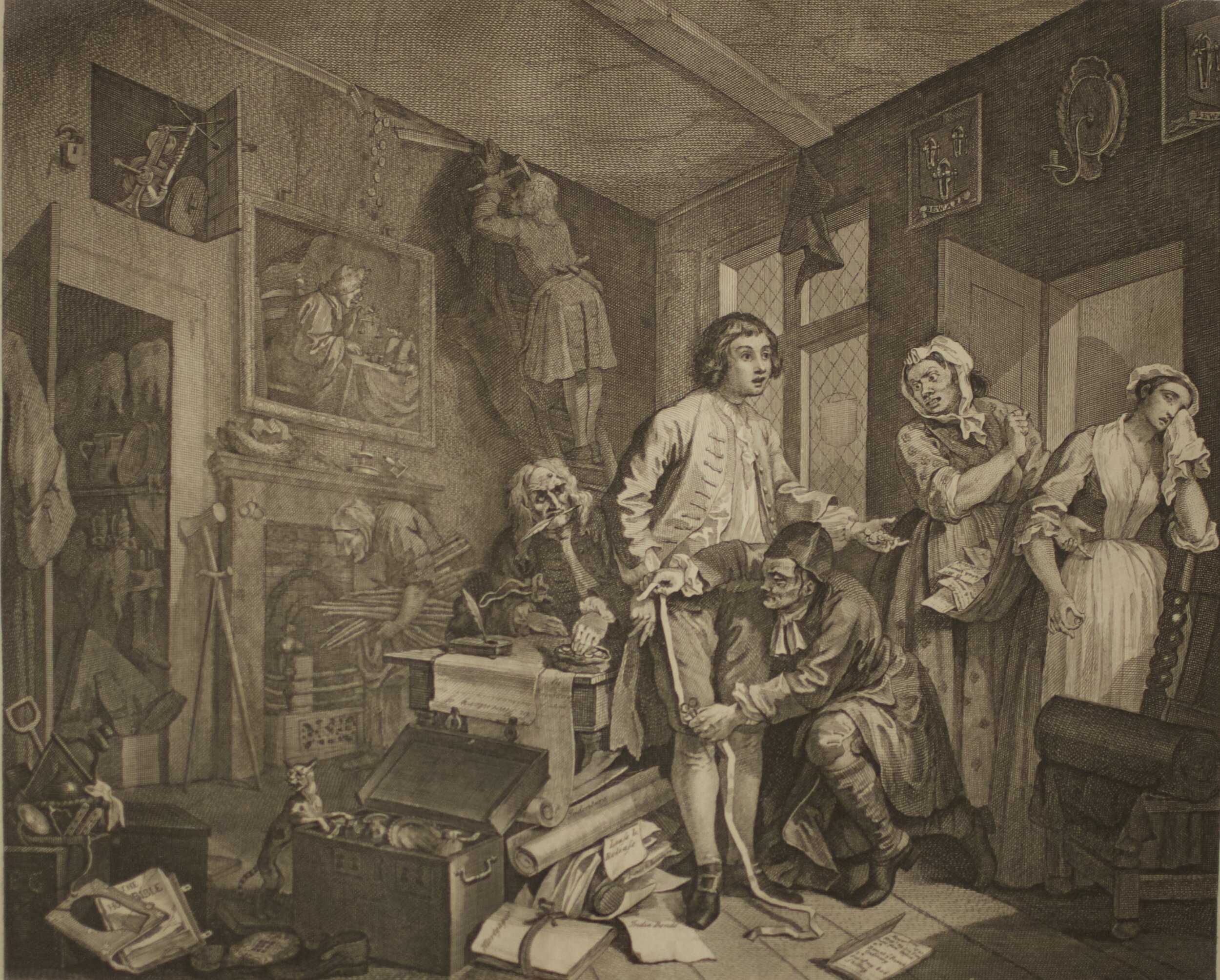
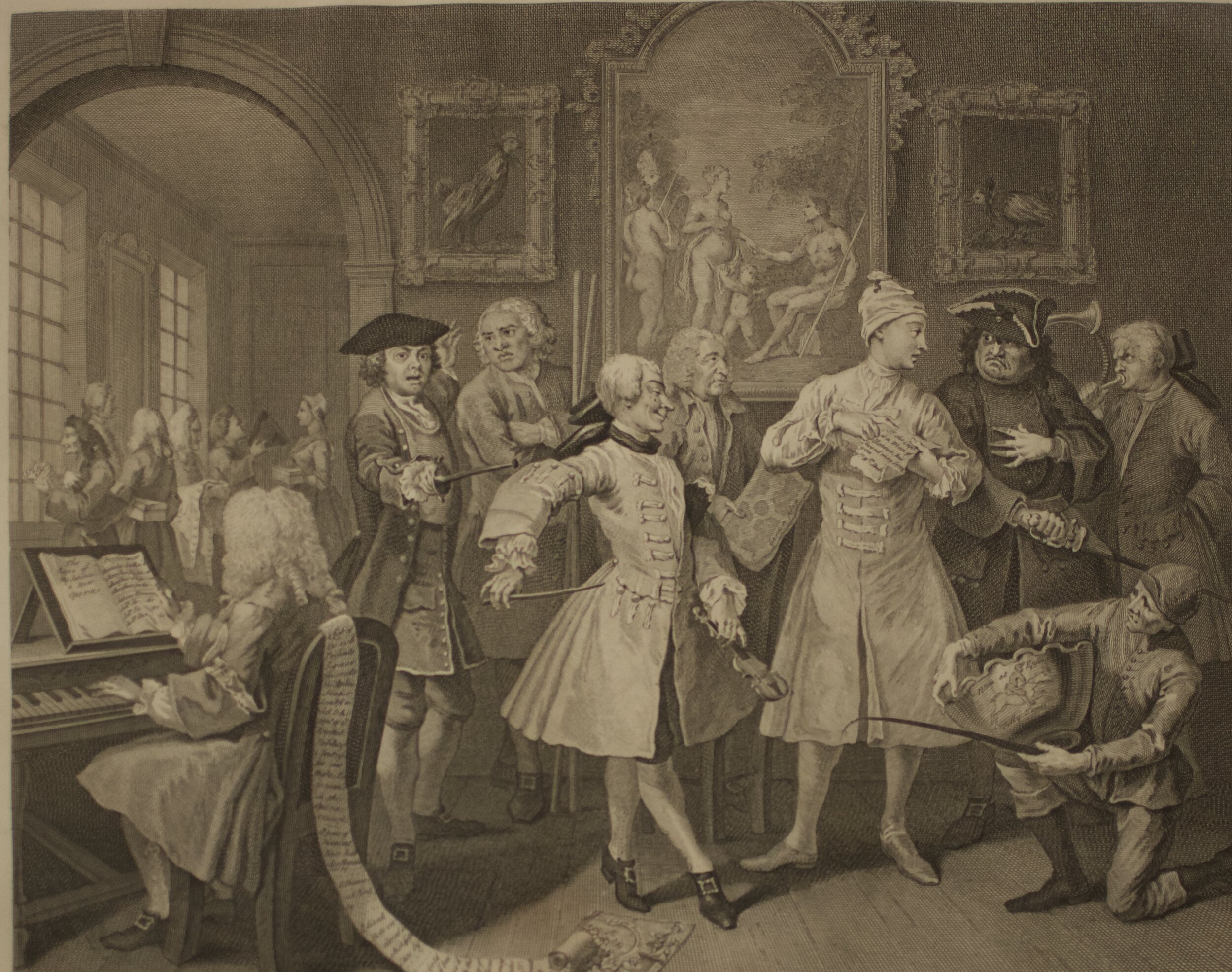


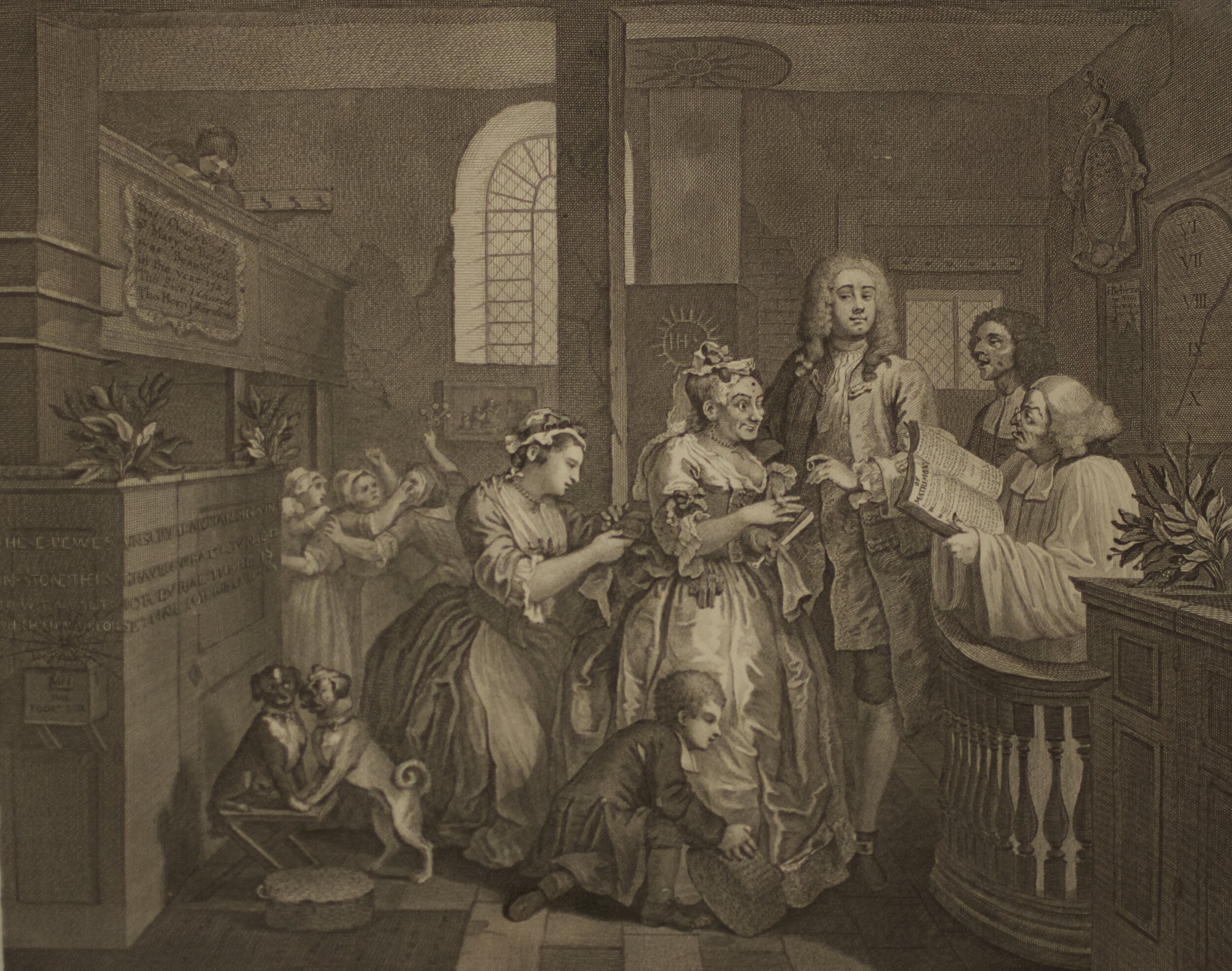
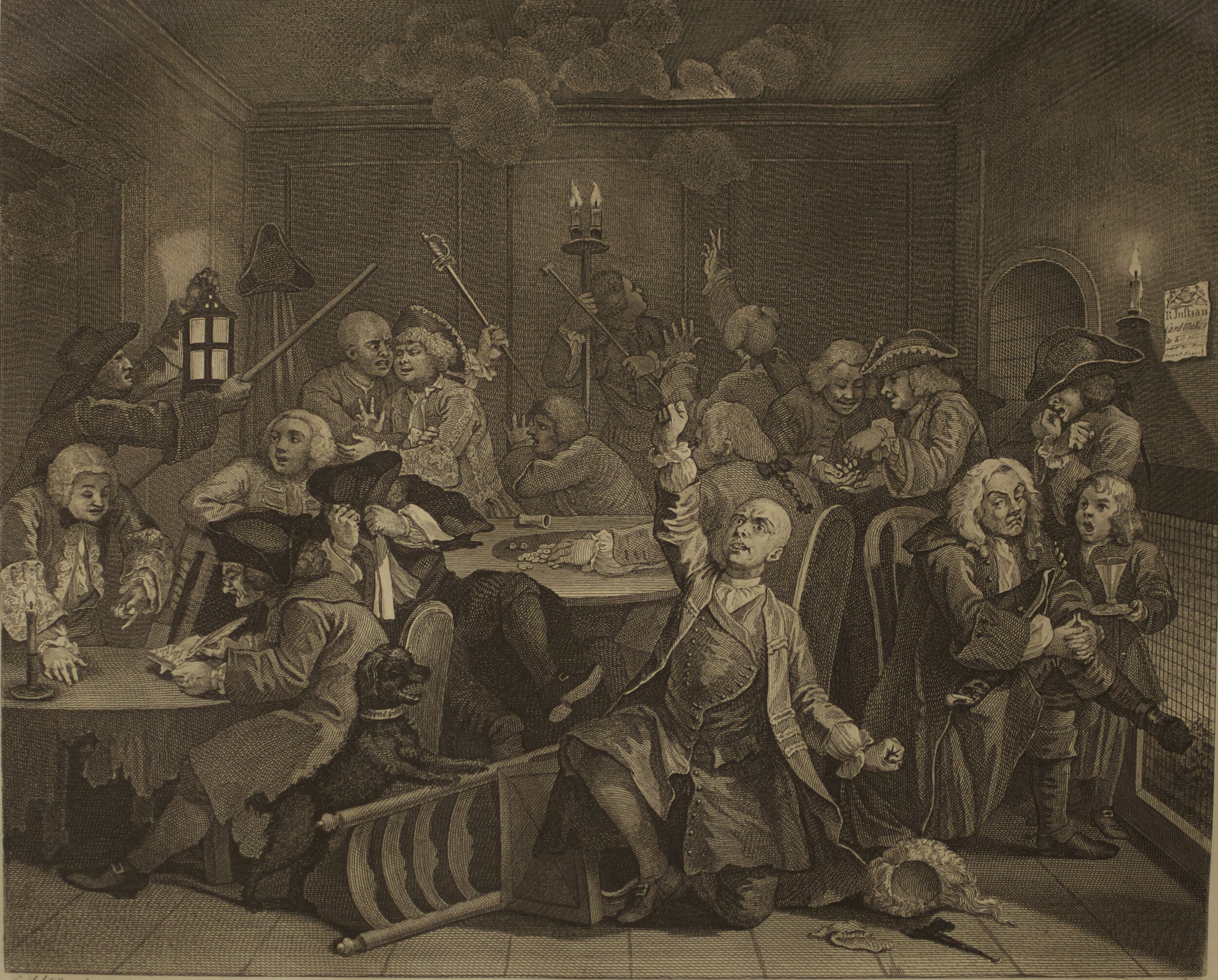

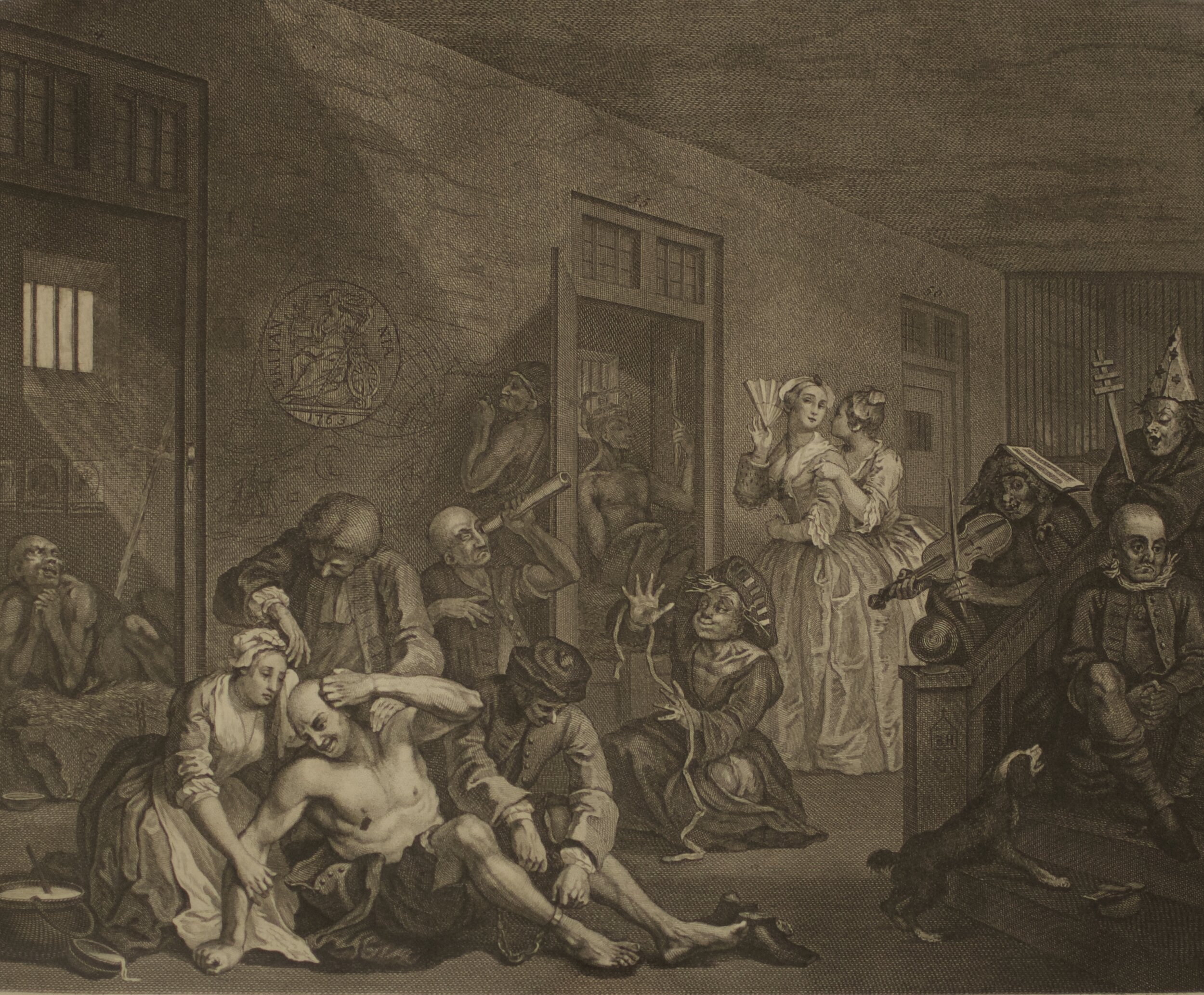
Plate 1, The Heir from A Rake’s Progress

